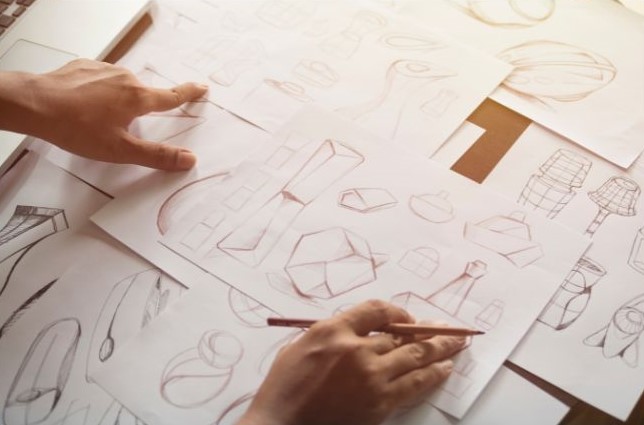

The Art of Product Prototyping: A Creator's Guide to Success
In the realm of product creation, the journey from conceptualization to a tangible, market-ready product is a complex yet exciting process. One indispensable phase in this journey is product prototyping. Prototyping serves as the bridge between a creator’s vision and the realization of a functional, appealing product. In this comprehensive guide, we delve into the art of product prototyping, emphasizing its significance in the broader product development process. Whether you’re crafting physical wonders or digital innovations, understanding and mastering prototyping is key to your success.
The Importance of Prototyping:
Prototyping is the heartbeat of product development, offering creators an invaluable opportunity to refine their ideas, troubleshoot potential issues, and visualize the end product. It acts as a tangible proof of concept, allowing creators to assess the feasibility of their vision before committing to full-scale production. In the competitive landscape of creators, those who recognize and embrace the importance of prototyping gain a strategic advantage in delivering high-quality, market-ready products.
Benefits of Product Prototyping
1. Refinement of Design Concepts
Prototyping provides creators with a hands-on experience of their designs. By interacting with a physical or digital prototype, creators can identify design flaws, assess ergonomics, and make necessary adjustments to enhance user experience.
2. Identification of Manufacturing Challenges
For creators crafting physical products, prototyping serves as a testing ground for manufacturing processes. Identifying challenges early in the prototyping phase allows for the implementation of efficient and cost-effective production methods.
3. User Feedback and Engagement
Prototypes offer a tangible entity for user testing and feedback. By involving potential users in the prototyping process, creators gain valuable insights into user preferences, ensuring the final product aligns with market expectations.
4. Cost and Time Efficiency
While the initial investment in prototyping may seem substantial, it pales in comparison to the potential costs and time associated with correcting errors in the later stages of product development. Prototyping serves as a preventive measure, reducing the risk of costly modifications post-production.
GET EXCLUSIVE ACCESS TO OUR EXPERTS CREATOR'S CORNER TIPS AND ADVICE:
- Get AHEAD of the Competition.
- FREE Membership to Mia’s Weekly Insiders secrets.
- FREE tailored resources and gifts.
- PLUS qualify to receive personal email support.

* We respect your privacy. We will not spam you.
Creating Effective Prototypes
The success of a prototype lies not just in its existence but in its effectiveness. Here, we present a step-by-step guide for creators to craft prototypes that truly serve their purpose:
1. Define Clear Objectives:
Before diving into the prototyping process, clearly outline the objectives you aim to achieve. Whether it’s testing a specific feature, assessing user interaction, or refining the overall design, having defined goals will guide your prototyping efforts.
2. Select Appropriate Materials and Tools:
Physical prototypes demand careful consideration of materials. Choose materials that align with the final product’s intended properties. For digital products, ensure your prototyping tools provide a realistic representation of the user interface and functionality.
3.Start with Low-Fidelity Prototypes:
Begin with low-fidelity prototypes, especially in the early stages. These prototypes are quick and cost-effective, allowing for swift iterations. As you progress, gradually move towards higher fidelity to capture finer details.
4. Iterate and Test:
Prototyping is an iterative process. Test your prototype rigorously, gather feedback, and iterate based on the insights gained. Repeat this cycle until you achieve a prototype that aligns seamlessly with your vision.
5. Digital Prototyping Tools:
For creators in the digital realm, leverage an array of powerful prototyping tools. Platforms like Figma, Adobe XD, and InVision allow you to simulate user interactions, test navigation flows, and refine the user interface before a single line of code is written.
6. Physical Prototyping Techniques:
Physical product creators can explore techniques like 3D printing, CNC machining, or traditional model-making. These techniques provide tangible representations, allowing creators to assess aesthetics, dimensions, and functionality.
Case Studies: Realizing the Impact of Prototyping
To further illustrate the impact of prototyping, let’s explore a couple of case studies where creators harnessed the power of prototyping to elevate their products:
1. XYZ Tech: Enhancing User Experience through Prototyping:
XYZ Tech, a software development startup, utilized digital prototyping tools to refine the user interface of their flagship application. By incorporating user feedback at the prototyping stage, they significantly improved user engagement and satisfaction upon product launch.
2. Artisan Creations: Perfecting Physical Products with 3D Printing:
A small-scale artisanal workshop embraced 3D printing for physical prototyping. This allowed them to experiment with intricate designs, assess material compatibility, and optimize manufacturing processes, resulting in a line of aesthetically pleasing and precisely crafted products.
Conclusion:
In the dynamic landscape of product creation, the art of prototyping stands as a linchpin between imagination and reality. Creators who grasp the significance of this phase in product development gain a competitive edge by delivering products that are not just envisioned but meticulously tested and refined. Whether you’re shaping the digital future or crafting tangible wonders, let the journey of prototyping be your guide toward creating exceptional, market-ready creations.
By incorporating the insights shared in this guide, creators can elevate their prototyping process, turning it into a strategic advantage on the path to product perfection. Embrace the art of product prototyping, and let your creations speak volumes in the language of innovation and quality.
MORE LIKE THIS...
Bringing you the latest information, ideas, products and services for your E-commerce business.
Copyright 2024 E-Market Pulse
Contact Us
We may receive compensation from partners listed through affiliate partnerships, at no cost to you. This doesn’t influence our ratings, and the opinions are our own
Subscribe to our Newsletter
Get updates on products and services specially targeted to help you succeed.
